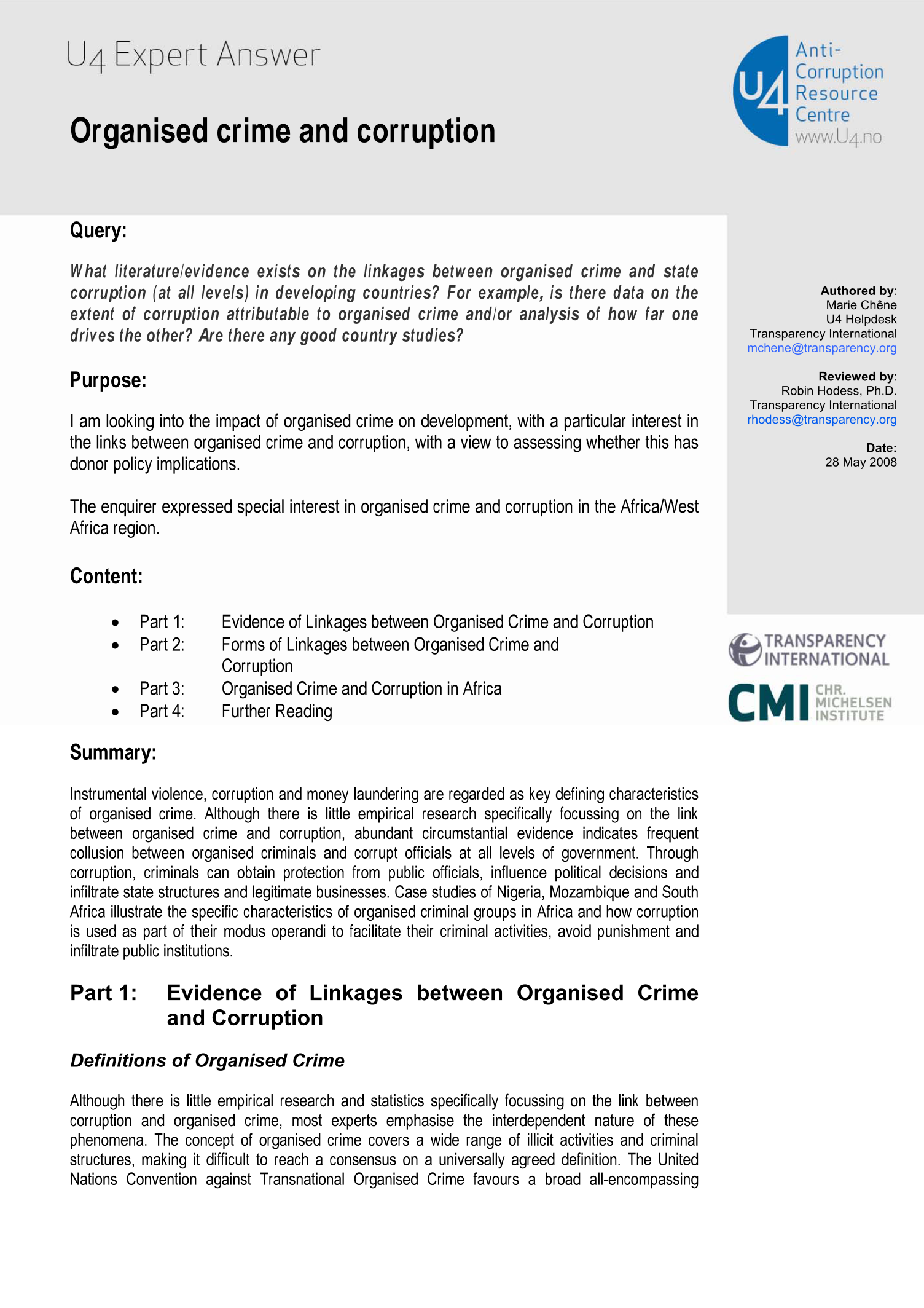U4 Helpdesk Answer
Organised crime and corruption
Instrumental violence, corruption and money laundering are regarded as key defining characteristics of organised crime. Although there is little empirical research specifically focussing on the link between organised crime and corruption, abundant circumstantial evidence indicates frequent collusion between organised criminals and corrupt officials at all levels of government. Through corruption, criminals can obtain protection from public officials, influence political decisions and infiltrate state structures and legitimate businesses. Case studies of Nigeria, Mozambique and South Africa illustrate the specific characteristics of organised criminal groups in Africa and how corruption is used as part of their modus operandi to facilitate their criminal activities, avoid punishment and infiltrate public institutions.

Cite this publication
(2008) Organised crime and corruption. Bergen: U4 Anti-Corruption Resource Centre, Chr. Michelsen Institute (U4 Helpdesk Answer null)
Disclaimer
All views in this text are the author(s)’, and may differ from the U4 partner agencies’ policies.
This work is licenced under a Creative Commons Attribution-NonCommercial-NoDerivatives 4.0 International licence (CC BY-NC-ND 4.0)